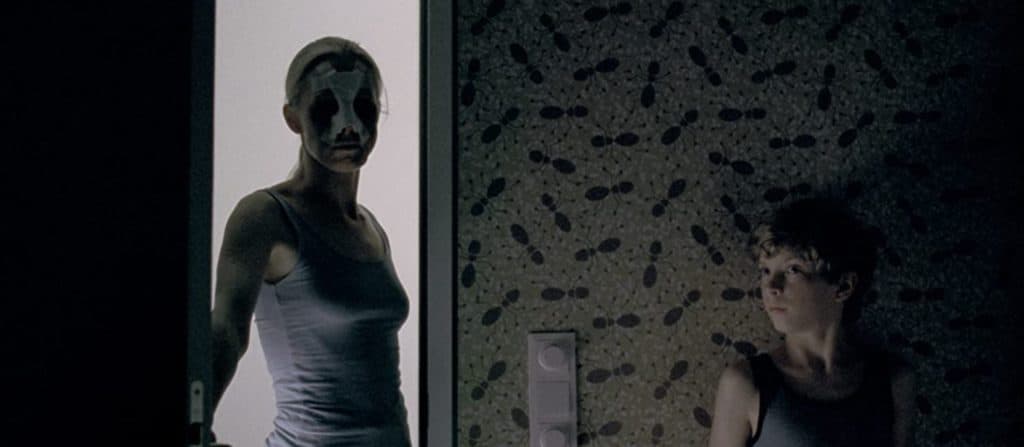
Defining Monster Horror
Monster horror can be defined in two ways. An animal of terrifying shape, like the creature portrayed in the space horror Life (2017). Or, like one who wanders away from their normal behavior, as portrayed in the German horror film Goodnight Mommy (2014)
Sure, monsters huff and puff. Monsters blow the house down. Angry monsters stomp cities flat as pancakes. Still, other monsters remind us that “in space, no one can hear you scream.” And then, there are the “mental monsters.” The kind which feed off human emotions.
In his essay, The Importance of Monsters, author Stephen Fox writes, “despite their exaggerated and frightening features, monsters are often shown to have some small portion of humanity, either in how they act or how they look. This can result in the monsters acting as reflections or representations of different aspects of our psyche. [1]” And so it is with the first of two articles about Monster Horror, we’ll dive deep into recesses of the mind and discover where some monsters live.
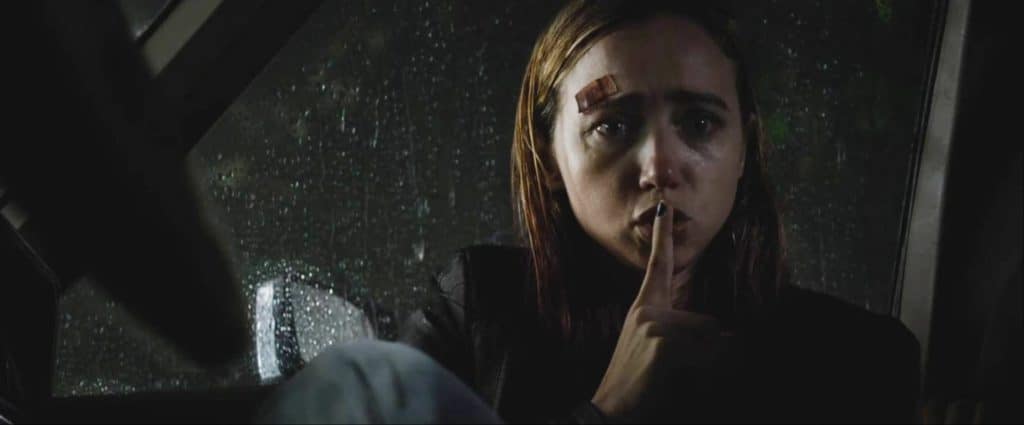
Horribly Monstrous Family Dynamics
A sudden blowout, on a deserted highway. A mother and daughter in a love-hate relationship. Suddenly, a forest-dwelling, ravenous, snarling, saber-toothed beast! Director Bryan Bertino’s The Monster (2016) combines monster horror with an allegory for the ages.
It becomes clear that The Monster also personifies the importance of listening, both in a troubled relationship and as a survival mechanism. Heavily wrapped in symbolism and flashbacks the film keeps you guessing about the power struggle between the two main characters. And there are plenty of jump scares!
Film critic Justin Chang of The New York Times writes, “fighting for the life of her daughter, despite the sinister patter of raindrops on the windshield, or the glow of a flashlight beam… Not least of the surprises here is that even when The Monster is trying to scare you witless, every scene insistently reaffirms each characters’ humanity.[2]”
Similarly, Bird Box (2018) made audiences question humanity and believe that looking at a monstrous entity caused suicide. Yet, without truly ever seeing the antagonist, the film sets the stage for global madness. Supported by The Werther Effect, perhaps? Bird Box exposes the power of how rising reports of mass suicide, in the media, can act as social proof, which leads to an immense increase in copycat suicides.
Not a great way to “keep up with the Joneses,” but an excellent examination of social engineering.
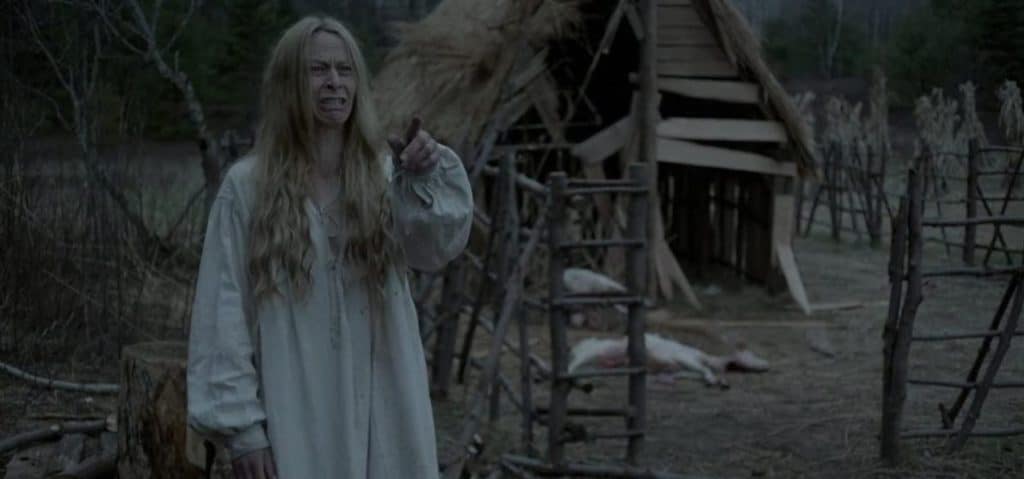
Black Phillip – Monster Horror Incarnate
In writer/director Robert Eggers’s celebrated debut film, The Witch (2015), a family, banished from the church, ends up in a creepy woods, living off the grid. Set in 1630 New England the film reveals some disturbing “diabolical aftershocks of Puritan repression.”
After their baby disappears, “religious hysteria and madness” expose the family to a demonic force living in their billy goat named Black Phillip. Thomasin becomes the last family member standing and confronts Black Phillip at the climax of the film.
When Black Phillip teases Thomasin and speaks of worldly temptations: a taste of real butter and the opportunity to “live deliciously,” the overtly sexual tone is diabolic and stands as one of the creepiest one minute and forty-two seconds of the devil personified.
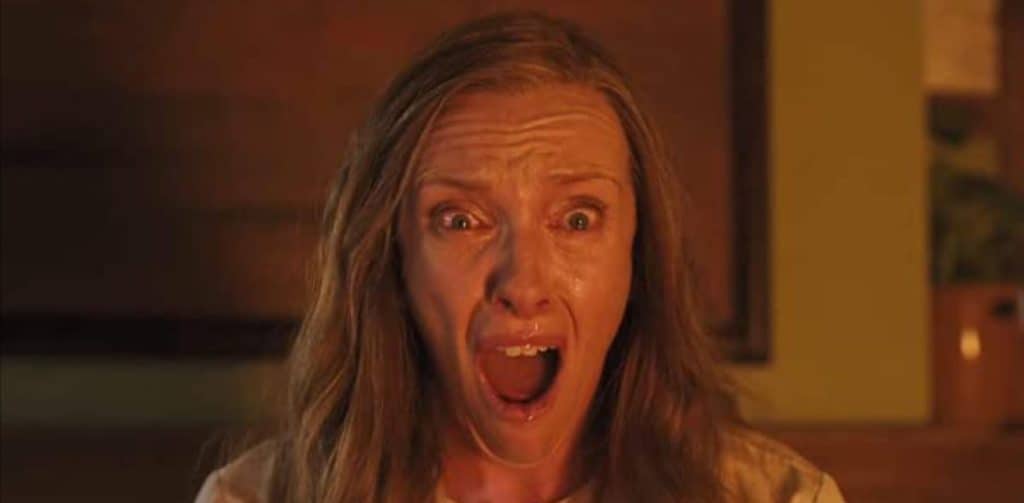
A Mother and an Unforgiving Monster
Pain, manipulation, and ties to a satanic occult make director Ari Aster’s Hereditary (2018) a memorable train wreck. The film is odd, loud, fragmented, and impossible to unsee.
It tells the story of the Byrne family, caught in a downward spiral after the sudden death of “their secretive, demon-worshipping grandmother.” In a dinner scene that culminates in a mother exposing each of the family member’s “monsters.” Actress, Toni Collette turns in a blistering portrayal that garnered massive Oscar buzz.
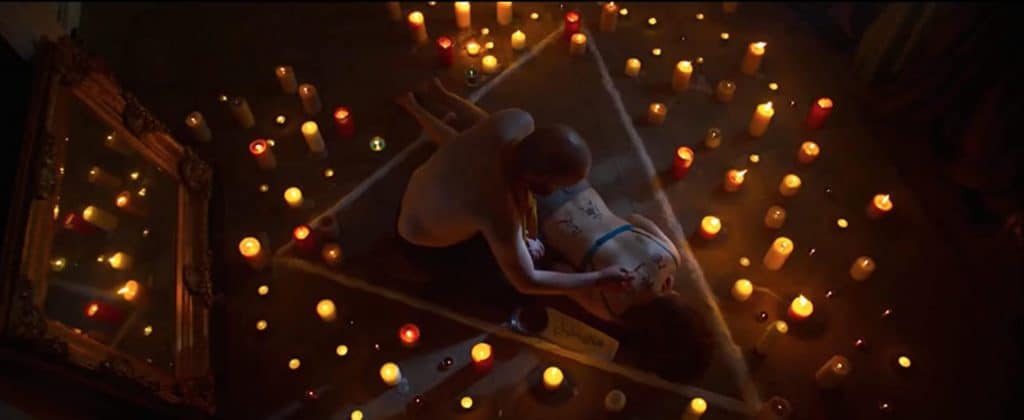
A Mother’s Monstrous Revenge
Conversely, director Liam Gavin’s, A Dark Song (2016) provides a quiet and haunting horror experience. Finding forgiveness for the men that murdered her son, Sophia embarks on a subtle and horrific feast of monster horror catharsis. After spending her life savings to rent an old country house, she hires an occultist to help her conjure the evilest entity “available” to exact revenge.
In a revenge film that “musters multiple shades of smoke and soot into a haunting evocation of grief, so disruptive it will rend the fabric between this world and the next.[3]” There has never been a monster horror film so painfully evocative. This must-see homage to catharsis and deep inner-reflection is one-of-a-kind.
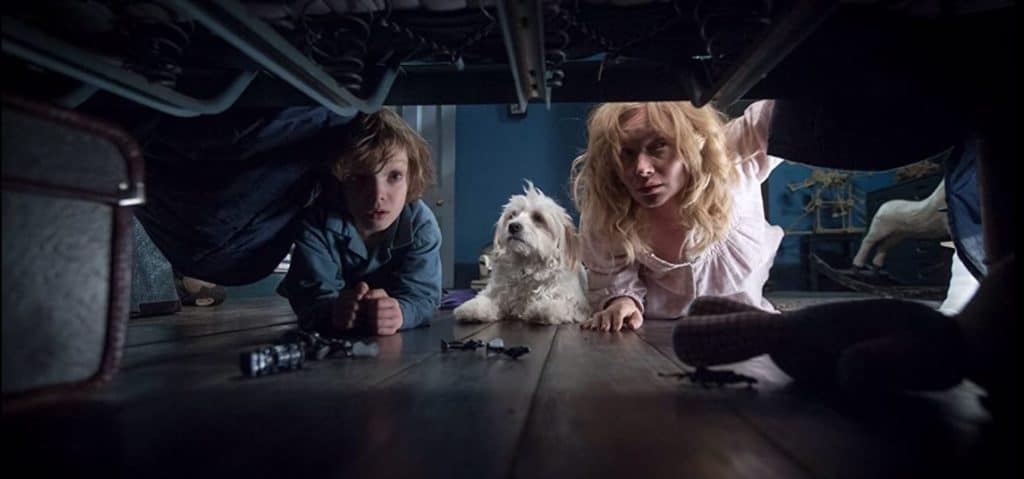
Babadook – The “Mother” of Monster Horror
One of the most alarming monster horror films comes from director Jennifer Kent. Gripping, intelligent, and slightly ambiguous, The Babadook (2014) reveals a very dark portrait of the relationship between trauma and pain.
The film examines a mother “in a profound state of mourning; the unpredictability of a trouble-prone son, and the desperation she feels to be perfect and patient.”
In addition, “Samuel, her son, turns unexpectedly violent, In the wake of reading a disturbing children’s book titled Mister Babadook the mayhem begins. Convinced the monster is real, emotions and mental stamina frays — leaving a mother to wonder if there actually is a demonic entity haunting her house.[4]”
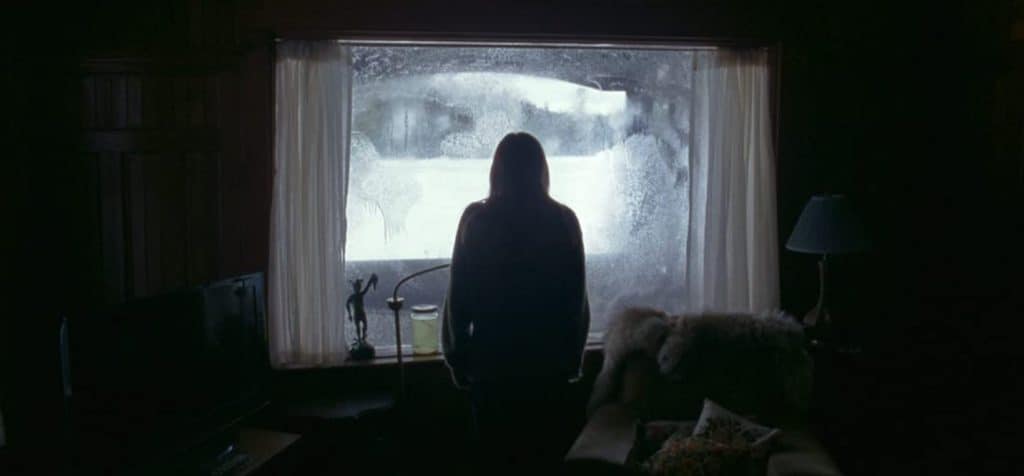
Monster Horror, Mental Illness & Trauma
Next time a weekend in the woods sounds fun, be sure to take a mental health check first. The Lodge (2019) raises the bar on “Have you checked the children,” a la When a Stranger Calls (1979). The Lodge is a rollercoaster of tight spaces and long stretches of silence. The odd camera angles shine a spotlight on a woman’s very questionable moral compass. The movie makes for uncomfortable viewing.
The Lodge takes a twisted and painful look at mental illness. Critic Brian Tallerico writes, “a truly unsettling movie, the kind of horror film that rattles you on an almost subconscious level, making you more uncomfortable than going for cheap scares. Don’t ask questions or dissect the believability of the plot. Just check-in.“
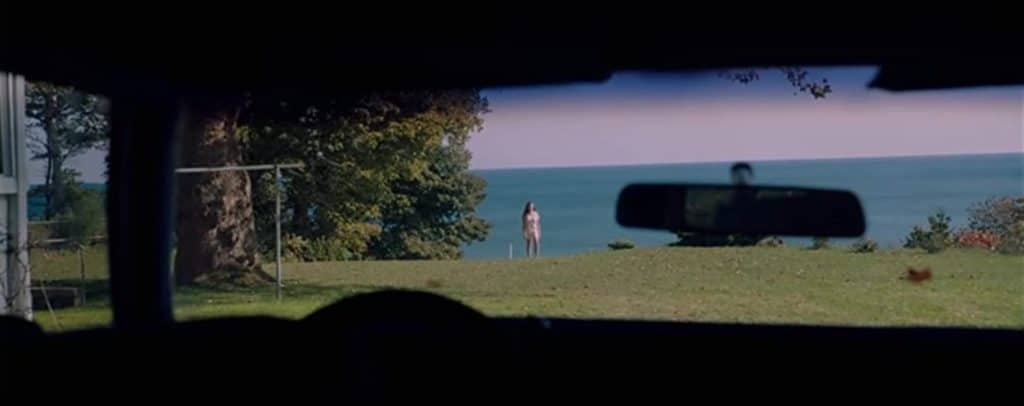
Ambiguous Monster Horror
A shape-shifting beast propelled director David Robert Mitchell’s It Follows (2014) into the monster horror stratosphere. What the “It” appears after a young woman, named Jay, has a strange sexual encounter. Afterward, she becomes part of a chain of people followed by a strange “supernatural force.” Only people linked into the mysterious chain can see “It” following them.
The film can be viewed as a metaphor. For what isn’t totally clear. Much like the protagonists in the classics The Changeling (1980), and Don’t Look Now (1973) audiences are forced to grapple with the psychological monsters laying dormant in a troubled mind for too long.
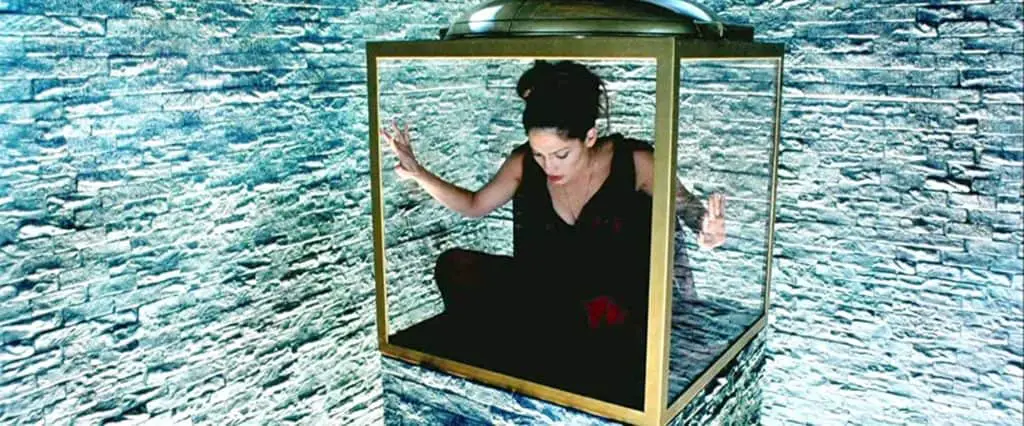
Fictitious Tears Can Soothe the Real Ones[6]
Horror monsters represent our anxieties and grief and teach us lessons about forgiveness and healing. Eren Orbrey of The New Yorker writes, “In a 1965 article titled “Monsters Are Good for My Children,” the author Terri Pinckard argued that it’s healthy for parents to show their kids films that echo anxieties of the times.[7]”
Children meet monsters in storybooks, and fun, musically themed animated films. Usually, after a scary story or movie, there are rules. No Lights Out (2016). The door is “left open a crack.” The underside of the bed is inspected for scary clowns. Remember Poltergeist (1982)? As adults, we learn that horror monsters, from the bookshelf, were simply placed on the pages to help us overcome our fears.
Conversely, adult audiences have entered the troubled minds of real-life monsters. Directors, Tarsem Singh, David Fincher, and James Mangold, for example, blend art, culture, and historical references with the mad, “artistic brilliance” of serial killers. Singh’s, Carl Rudolph Stargher, in The Cell (2000), Fincher’s, John Doe, in SE7EN (1997), and Mangold’s Malcolm Rivers, in Identity (2003), delicately placed under an extremely empathetic lens. Tales of abused and abandoned children that grew into human monsters. All they wanted was to be loved.
Monsters: Real and Scary as Hell
Monsters are real and scary as hell. Using film as the medium, to explain the difficulties of living with mental health issues, director’s with a vision to show the connection, between monsters and the mind, have created some of the most memorably frightening, and oftentimes realistic horror films.
There is another kind of monster, however; the snarly, drooly-hissy kind. One very famous movie monster has bled acid, hellbent-on-global-annihilation! No matter how ugly and angry, they’re hungry and have no respect for the mind or mental health, or the family dynamic. These monsters hunt for one reason only: the sport! Meet them in the next article The Origins of Monster Horror.
